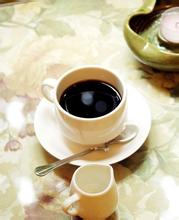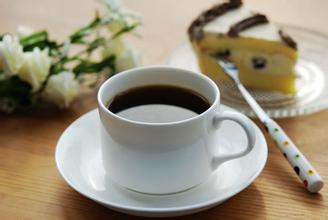Introduction to the grinding scale treatment method for the flavor description of El Salvador Pacamara coffee beans
Pacamara coffee beans
Pacamara bean shape is too large, in the treatment field for peeling and separation, often stuck in the holes or gaps of the machine, the machine must be adjusted from time to time to deal with separately. Due to the limited initial output of Pacamara, coupled with the fact that there are few large seeds in the country, most washing plants lack experience in dealing with large coffee fruits, not to mention extra sieves with larger mesh to specially deal with Pakamara species, so they are naturally reluctant to deal with new species. The problem of wet treatment after harvest will not be solved until 1990 when the Awasan Cooperative released its goodwill and was willing to sign a contract with Ecuador. After Urguado has no worries, with more skilled planting techniques, harvesting coffee cherries with the same maturity, and careful post-harvest treatment, finally make the Pacamara species of Pacamara estate shine! Won the 24 in 2003, the seventh in 2005, won the runner-up in 2008, when I and Japan's Maruyama Coffee jointly bid for this runner-up batch of Pacamara flavor, rich and changeable is rare in other varieties, for example, in addition to fruit and rich taste, but also with apricot, vanilla plants, tropical fruits, chocolate, sweet spices and other changes. But there is no better. Mature Pakamara coffee trees will show a gradual decline in yield or occasional unstable flavor, and have high requirements for soil and water and microclimate. When planted in inappropriate locations, they will be slightly less clean and have a bad wood smell. The owner of Santa Marie, the winner of the Excellence Cup in Honduras, has analyzed to me that bean bakers who like Pakamara should choose their products and estates carefully to avoid stepping on the mines of Pacamara the old bear.
Pacamara is the artificial breeding variety of Pacas and Maragogipe. It was first cultivated by researchers in El Salvador in 1958. Pacamara is an excellent variety under rare artificial breeding, which is better than blue, and perfectly inherits the advantages of the mother plant. Both the excellent taste of Pacas and the large size of Maragogipe are inherited by raw bean granules. The bean body is at least 70% and 80% of that of elephant beans, with more than 17 orders and more than 100% and more than 18 eyes. Average bean length 1.03 cm (general bean about 0.8-0.85 cm) average bean width 0.71 cm (general bean about 0.6-0.65), thickness 0.37 cm, bean shape plump and round. The biggest feature of this variety is that it is sour, lively and tricky, sometimes biscuit, sometimes fruity, thick and greasy. The quality is the best from El Salvador and Guatemala.

Important Notice :
前街咖啡 FrontStreet Coffee has moved to new addredd:
FrontStreet Coffee Address: 315,Donghua East Road,GuangZhou
Tel:020 38364473
- Prev

Colombia Ramon Coffee Bean Flavor Description Taste Treatment Variety Characteristics
Colombia Ramon Coffee Bean Flavor Description Taste Treatment Variety Features Coffee is the pride of Colombia people, Colombia people like to talk about a few things, in addition to their football once ranked among the best in the world, is that they are proud of coffee. Coffee in Colombia is a pleasure, not only essential three times a day, but also full of cafes, from
- Next

Introduction of Brazilian Yellow bourbon Coffee Bean Flavor description Grinding scale treatment Manor
Brazil Yellow bourbon Coffee Bean Flavor description Grinding scale treatment Manor Brazil is vividly compared to the giant and monarch of the coffee world. There are about 3.97 billion coffee trees there, and small farmers now grow 75% of Brazil's total coffee production. Brazil produces twice or even three times as many coffee as Colombia, which is the second largest coffee in the world.
Related
- Detailed explanation of Jadeite planting Land in Panamanian Jadeite Manor introduction to the grading system of Jadeite competitive bidding, Red bid, Green bid and Rose Summer
- Story of Coffee planting in Brenka region of Costa Rica Stonehenge Manor anaerobic heavy honey treatment of flavor mouth
- What's on the barrel of Blue Mountain Coffee beans?
- Can American coffee also pull flowers? How to use hot American style to pull out a good-looking pattern?
- Can you make a cold extract with coffee beans? What is the right proportion for cold-extracted coffee formula?
- Indonesian PWN Gold Mandrine Coffee Origin Features Flavor How to Chong? Mandolin coffee is American.
- A brief introduction to the flavor characteristics of Brazilian yellow bourbon coffee beans
- What is the effect of different water quality on the flavor of cold-extracted coffee? What kind of water is best for brewing coffee?
- Why do you think of Rose Summer whenever you mention Panamanian coffee?
- Introduction to the characteristics of authentic blue mountain coffee bean producing areas? What is the CIB Coffee Authority in Jamaica?

